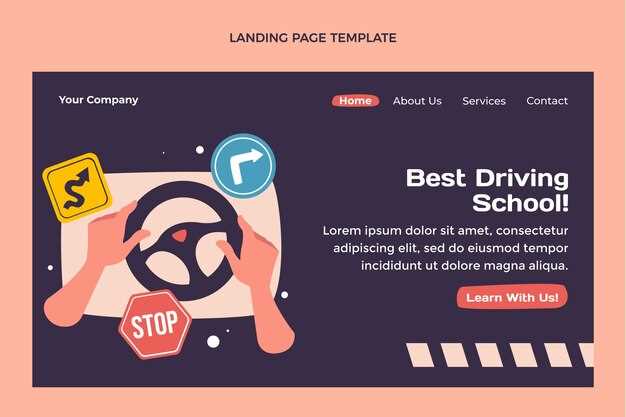
Embarking on a test drive is more than just a leisurely jaunt; it’s an essential step in your car-buying journey, especially when considering a Ford. To ensure you make the most of this opportunity, having a clear checklist in hand can be invaluable. Whether you’re a seasoned driver or a first-time car buyer, understanding what to focus on during your drive will help you assess the vehicle thoroughly.
During your test drive, concentrate on how the Ford feels on the road. Pay attention to the engine performance, handling, and overall comfort of the vehicle. This is your chance to evaluate elements like visibility, noise levels, and safety features, which are crucial for daily use. A structured approach allows you to make comparisons between different models and helps clarify which Ford aligns with your driving style and needs.
Before you slide behind the wheel, take a moment to prepare a checklist of aspects to test during the drive. From acceleration to braking response, each element plays a significant role in your final decision. With an organized plan in place, you’ll walk away from the experience feeling confident and informed, ready to make a choice that suits you best.
Preparing for Your Test Drive: What to Check Before Arriving

Before you head out for your Ford test drive, having a detailed checklist can significantly enhance your experience. Here are some essential components to review prior to your appointment:
1. Research the Model: Familiarize yourself with the specific Ford model you intend to test. Understand its features, specifications, and available options. This will help you formulate relevant questions and concerns during the test.
2. Verify Appointment Details: Double-check your appointment time and ensure you have the correct dealership address. Arriving on time shows professionalism and makes a positive impression.
3. Bring Necessary Documentation: Have your driver’s license and proof of insurance ready. Some dealerships may require these documents to allow you to take the vehicle on a test drive.
4. Prepare Your Checklist: Create a checklist of aspects you want to evaluate during the test. Consider elements such as comfort, visibility, noise levels, and handling. Being systematic will help you assess the car more effectively.
5. Plan Your Route: Choose a test route that includes a variety of driving conditions, such as highway, city streets, and bumps. This will provide a comprehensive understanding of how the vehicle performs in different scenarios.
6. Bring a Friend: If possible, take a friend or family member with you. They can provide an additional perspective and help you remember feedback and details you may overlook.
7. Dress Comfortably: Wear comfortable clothing and shoes since you may be spending some time in the vehicle. This will help you focus on the driving experience without distractions.
By taking these steps to prepare, you will be more confident and capable of making an informed decision after your test drive. Thorough preparation ensures that you enjoy the experience and assess the vehicle accurately.
Key Features to Evaluate During the Test Drive

When you’re behind the wheel during your Ford test drive, pay close attention to the vehicle’s overall performance. Evaluate the acceleration and braking capabilities. Notice how the car responds when you press the accelerator and how quickly it comes to a stop.
Assess the steering feel to determine how the vehicle handles curves and straightaways. A responsive steering system should provide a good balance between precision and comfort.
Comfort is another critical feature. Sit in both the driver’s and passenger seats to evaluate the ergonomics and support offered. Check the legroom and headroom as well as the quality of materials used in the interior.
Don’t overlook technology features such as the infotainment system. Test out the ease of connectivity with your smartphone, voice command functionality, and the clarity of the display. Ensure the navigation system is user-friendly, if available.
Additionally, evaluate the visibility from the driver’s seat. Check mirrors and window placement for any potential blind spots. Good visibility is essential for safety and confidence while driving.
Finally, take note of the noise level inside the cabin during the test drive. Listen for road and wind noise, as well as the sound produced by the engine at different speeds. A quiet cabin can greatly enhance your driving experience.
Post-Test Drive: Questions to Ask the Dealer
After your test drive, it’s essential to gather as much information as possible to make an informed decision. Here’s a concise checklist of questions you should consider asking the dealer:
1. What are the vehicle’s additional features?
Understanding the included features, such as safety technology, infotainment options, and performance enhancements, is crucial. Ask specifically about any packages that may enhance your driving experience.
2. What is the warranty coverage?
Inquire about the details of the warranty, including the duration, coverage limits, and what services are included. Knowing this will help you assess the long-term value of the vehicle.
3. Are there any ongoing promotions or incentives?
Dealers often have special financing offers or rebates. Make sure to ask if there are any current promotions that you might qualify for after your drive.
4. What is the vehicle’s fuel efficiency?
Understanding the expected MPG ratings will help you evaluate the cost of ownership. Ask if these numbers are verified by the EPA or other reliable sources.
5. Can you provide a vehicle history report?
If you’re considering a used vehicle, request a vehicle history report to check for any previous accidents or major repairs that might affect its performance.
6. What are the financing options available?
Discuss the various financing plans, interest rates, and loan terms. Knowing your options can help you find the most suitable financial arrangement that fits your budget.
7. Can you explain the maintenance requirements?
Ask for details about the scheduled maintenance and service intervals. Understanding the upkeep will assist you in estimating future costs associated with your new drive.
8. What should I know about the trade-in process?
If applicable, inquire about how the dealer values trade-ins and what documentation you’ll need to provide. This knowledge can help you maximize your trade-in value.
By addressing these questions post-test drive, you can ensure a comprehensive understanding of the vehicle and make a decision that aligns with your needs and preferences.



